Mary Anne Yarde's Blog: The Coffee Pot Book Club , page 165
November 11, 2018
#Giveaway — The Highlander Who Protected Me by Vanessa Kelly #HistoricalRomance #Highlanders @hfvbt @VanessaKellyAut
Historical Virtual Blog Tour Presents….

The Highlander Who Protected MeBy Vanessa Kelly

Bestselling author Vanessa Kelly returns with an enthralling new series about the men of the Kendrick clan—and the women who claim their hearts…
Lady Ainsley Matthews, heiress and darling of the ton, was expected to make a magnificent match. Instead she’s hiding on a remote Scottish estate, terrified that her vicious former fiancé will use her pregnancy to force her into marriage. One man can help her—Royal Kendrick, son of a distinguished Highland clan. Though a mistake drove them apart long ago, Royal is the only person Ainsley trusts to protect her baby—even if that means agreeing to never see either of them again . . .
Scarred in body and soul by war, Royal suddenly has a purpose—caring for an innocent babe and thereby helping the woman he can’t stop loving. But when Ainsley ultimately returns to Scotland, determined to be a real mother to her child in spite of the risk, there’s only one solution: marriage. And only one likely outcome: surrendering to the desire that’s simmered between them for so long, no matter how dangerous it may be…
Read an ExcerptHERE!
Giveaway
During the Blog Tour we will be giving away a print copy of Three Weeks with a Princess and The Highlander’s Princess Bride, plus a magnet, signed cover flats and a free digital download of the anthology, The Dukes of Vauxhall! Enter the Giveaway:
HERE!
Giveaway Rules
• Giveaway ends at 11:59pm EST on November 14th. You must be 18 or older to enter.
•Giveaway is open INTERNATIONALLY.
• Only one entry per household.
• All giveaway entrants agree to be honest and not cheat the systems; any suspect of fraud is decided upon by blog/site owner and the sponsor, and entrants may be disqualified at our discretion.
• Winner has 48 hours to claim prize or new winner is chosen.
AMAZON | BARNES AND NOBLE | BOOK DEPOSITORY | IBOOKS | GOOGLE PLAY | INDIEBOUND | KOBO
Vanessa Kelly
 Vanessa Kelly is the award-winning and USA Today bestselling author of The Improper Princesses series, The Renegade Royals Series and The Stanton Family series, in addition to other historical romances. Named by Booklist as one of the “New Stars of Historical Romance,” she is a Maggie Medallion winner and is well known for developing vibrant Regency settings, appealing characters, and witty storylines that captivate readers.
Vanessa Kelly is the award-winning and USA Today bestselling author of The Improper Princesses series, The Renegade Royals Series and The Stanton Family series, in addition to other historical romances. Named by Booklist as one of the “New Stars of Historical Romance,” she is a Maggie Medallion winner and is well known for developing vibrant Regency settings, appealing characters, and witty storylines that captivate readers.When she’s not dreaming up plots for her next Regency historical novel, Vanessa is writing USA Today Bestselling contemporary romance with her husband under the pen name of V.K. Sykes.
You can find Vanessa at vanessakellyauthor.com or at vksykes.com. For all of Vanessa’s latest news and contests–and to receive a free story–please sign up for her newsletter on her website.
Published on November 11, 2018 23:00
We will remember them... #ww1centenary
They shall grow not old, as we that are left grow old:Age shall not weary them, nor the years contemn.At the going down of the sun and in the morningWe will remember them.
For the Fallen — Robert Laurence Binyon (1869-1943)

Published on November 11, 2018 03:00
November 10, 2018
A conversation with Historical Fiction author Steven A. Mackay #HistoricalFiction #TheDruid #Giveaway @SA_McKay
The Druid

Northern Britain, AD430
A land in turmoil. A village ablaze. A king’s daughter abducted.
In the aftermath of a surprise attack Dun Buic lies in smoking ruins and many innocent villagers are dead. As the survivors try to make sense of the night’s events the giant warrior-druid, Bellicus, is tasked with hunting down the raiders and thwarting their dark purpose.
With years of training in the old ways, two war-dogs at his side, and unsurpassed skill with a longsword, Bellicus’s quest will take him on a perilous journey through lands still struggling to cope with the departure of the Roman legions.
Meanwhile, amongst her brutal captors the little princess Catia finds an unlikely ally, but even he may not be able to avert the terrible fate King Hengist has in store for her.
This, the first volume in a stunning new series from the bestselling author of Wolf’s Head, explores the rich folklore and culture of post-Roman Britain, where blood-sacrifice, superstition and warfare were as much a part of everyday life as love, laughter and song.
As Saxon invaders and the new Christian religion seek to mould the country for their own ends one man will change the course of Britain’s history forever. . .
. . . THE DRUID.
Steven A. McKay's archetypal villains and heroes step vividly onto the page from a mist-veiled past of legend to battle for the life of a princess and the fate of Britain.
Dark age adventure at its gripping best." MATTHEW HARFFY, author of The Bernicia Chronicles
Giveaway
Steven A. Mckay is giving a way two ebook copies of his fabulous book, The Druid. To be in with a chance just answer this question...
Who is your favourite druid / wizard / mystic, and why?

Giveaway Rules• Leave your answer in the comments at the bottom of this post.• Giveaway ends at 11:59pm BST on November 30th.You must be 18 or older to enter. • Giveaway is open INTERNATIONALLY. •Only one entry per household. • All giveaway entrants agree to be honest and not cheat the systems; any suspect of fraud is decided upon by blog/site owner and the sponsor, and entrants may be disqualified at our discretion.•Winners will be announced in the comments.
• Winner has 48 hours to claim prize or new winner is chosen.
Can't wait that long? Grab your copy of The Druid on Amazon today!
Amazon UK • Amazon US • Amazon CA •Amazon AU
Steven A. McKay
 Steven A. McKay was born in Scotland in 1977. His first book, "Wolf's Head", came out in 2013 and was an Amazon UK top 20 bestseller. "The Abbey of Death” is the final book in the Forest Lord series which has over 100,000 sales so far.
Steven A. McKay was born in Scotland in 1977. His first book, "Wolf's Head", came out in 2013 and was an Amazon UK top 20 bestseller. "The Abbey of Death” is the final book in the Forest Lord series which has over 100,000 sales so far.Steven's new book, "The Druid" is the first in a brand new series set in post-Roman Britain and was published on November 1st 2018. He is now finishing off a standalone novel about a slave in Roman Britain.
He plays guitar and sings in a heavy metal band when they can find the time to meet up (which isn't often these days to be honest).
Check out his website at
https://stevenamckay.com/
and sign up for the email list - in return we'll send you a FREE short story which is not available anywhere else, as well as offering chances to win signed books and other goodies!
Published on November 10, 2018 23:00
The Dark Ages: The time of King Arthur by Mary Anne Yarde #kingarthursbritain #amwriting #HistoricalFiction
The Dark Ages: The time of King Arthur.By Mary Anne Yarde

1846 William John Thoms, a British writer, penned a letter to The Athenaeum, a British Magazine. In this letter, he talked about “popular antiquities.” But instead of calling it by its common name, he used a new term — folklore.
What did Thoms mean by this new word? Well, let’s break it down. The word folk referred to the rural poor who were for the most part illiterate. Lore means instruction. So folklore means to instruct the poor. But we understand it as verbal storytelling. Forget the wheel — I think storytelling is what sets us apart. We need stories, we always have and we always will.
The Dark Ages is, I think, one of the most fascinating eras in history. However, it does not come without challenges. This was an era where very little was recorded in Britain. There are only a handful of primary written sources. Unfortunately, these sources are not very reliable. They talk of great kings and terrible battles, but something is missing from them. Something important. And that something is authenticity. The Dark Ages is the time of the bards. It is the time of myths and legends. It is a period like no other. If the Dark Ages had a welcoming sign it would say this:
“Welcome to the land of folklore. Welcome to the land of King Arthur.”
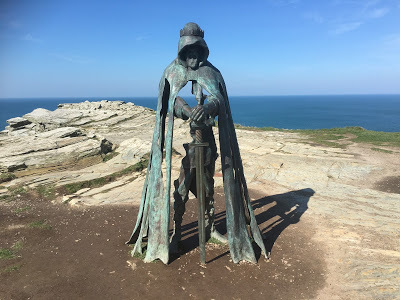 The King Arthur statue at Tintagel. The statue is called Gallos, which is Cornish for power.
The King Arthur statue at Tintagel. The statue is called Gallos, which is Cornish for power.The sculpture is by Rubin Eynon
Who was the real King Arthur?
Throughout the years there have been many arguments put forward as to who King Arthur was, what he did, and how he died. England, Scotland, Wales, Brittany and France claim Arthur as their own. Even The Roman Empire had a famous military commander who went by the name of Lucius Artorius Castus. There are so many possibilities. There are so many Arthurs. Over time, these different Arthurs became one. The Roman Artorious gave us the knights. The other countries who have claimed Arthur as their own, gave us the legend.
We are told that Arthur and his knights cared, for the most part, about the people they represented. Arthur was a good king, the like of which has never been seen before or after. He was the perfect tool for spreading a type of patriotic propaganda and was used to great effect in the centuries that were to follow. Arthur was someone you would want to fight by your side. However, he also gave ordinary people a sense of belonging and hope. He is, after all, as T.H. White so elegantly put it, The Once and Future King. If we believe in the legend, then we are assured that if Britain’s sovereignty is ever threatened, Arthur and his knights will ride again. A wonderful and heartfelt promise. A beautiful prophecy. However, there is another side to these heroic stories. A darker side. Some stories paint Arthur in an altogether different light. Arthur is no hero. He is no friend of the Church. He is no friend to anyone apart from himself. He is arrogant and cruel. Likewise, history tells us that the Roman military commander, Lucius Artorius Castus, chose Rome over his Sarmatian Knights. He betrayed them and watched as Rome slaughtered them all. It is not quite the picture one has in mind when we think of Arthur, is it? It is an interesting paradox and one I find incredibly fascinating.
King Arthur and Edward III
However, Arthur, to many people is a hero. Someone to inspire to. This was certainly true for Edward III. Edward was determined that his reign was going to be as spectacular as Arthur’s was. Edward believed in the stories of Arthur and his Knights. He had even started to have his very own Round Table built at Windsor Castle. Edward also founded The Order of the Garter— which is still the highest order of chivalry that the Queen can bestow. Arthur, whether fictional or not, influenced kings.
 Edward III
Edward IIISo how do we separate fact from fiction?
In our search for Arthur, we are digging up folklore, and that is not the same as excavating relics. We have the same problem now as Geoffrey of Monmouth did back in the 12th Century when he compiled The History of the Kings of Briton. His book is now considered a ‘national myth,’ but for centuries his book was considered to be factually correct. So where did Monmouth get these facts? He borrowed from the works of Gildas, Nennuis, Bede, and The Annals of Wales. There was also that mysterious ancient manuscript that he borrowed from Walter, Archdeacon of Oxford. Monmouth then borrowed from the bardic oral tradition. In other words, he listened to the stories of the bards. Add to the mix his own imagination and Monmouth was onto a winner. Those who were critical of his work were brushed aside and ignored. Monmouth made Britain glorious, and he gave us not Arthur the general, but Arthur the King. And what a king he was.
So is Arthur a great lie that for over a thousand years we have all believed in? Should we be taking the Arthurian history books from the historical section and moving them to sit next to George R. R. Martin's, Game of Thrones? No. I don’t think so. In this instance, folklore has shaped our nation. We should not dismiss folklore out of hand just because it is not an exact science. We should embrace it because when you do, it becomes easier to see the influence these ‘stories’ have had on historical events.
References:
(Author Unknown) — The Anglo-Saxon Chronicles (J. M. Dent, New edition, 1972)Bede — Ecclesiastical History of the English People (Bloomsbury Publishing Plc, 2012)Geoffrey of Monmouth — The History of the Kings of Britain (Penguin Books Ltd, 1966)Gildas — On the Ruin and Conquest of Britain (Serenity Publishers, LLC, 2009)Matthews, John, Caitlín — The Complete King Arthur: Many Faces, One Hero (Inner Traditions, 2017)Nennius — The History of the Britons (Dodo Press, July 2007)Pryor, Francis — Britain AD: A Quest for Arthur, England and the Anglo-Saxons (HarperCollins Publisher, 2005)Wood, Michael — In Search of the Dark Ages (BBC Books, 2005)
Images:
Stonehenge — TheDigitalArtist / 5052 images, PixabayEdward III — Scanned from the book The National Portrait Gallery History of the Kings and Queens of England by David Williamson, ISBN 1855142287. Reproduction of a painting that is in the public domain because of its age.
The Du Lac Prophecy(Book #4 of The Du Lac Chronicles)
 Two Prophesies. Two Noble Households. One Throne.
Two Prophesies. Two Noble Households. One Throne.Distrust and greed threaten to destroy the House of du Lac. Mordred Pendragon strengthens his hold on Brittany and the surrounding kingdoms while Alan, Mordred’s cousin, embarks on a desperate quest to find Arthur’s lost knights. Without the knights and the relics they hold in trust, they cannot defeat Arthur’s only son – but finding the knights is only half of the battle. Convincing them to fight on the side of the Du Lac’s, their sworn enemy, will not be easy.
If Alden, King of Cerniw, cannot bring unity there will be no need for Arthur’s knights. With Budic threatening to invade Alden’s Kingdom, Merton putting love before duty, and Garren disappearing to goodness knows where, what hope does Alden have? If Alden cannot get his House in order, Mordred will destroy them all.
Amazon US • Amazon UK • Amazon CA

Website/Blog • Facebook • Twitter • Amazon Author Page • Goodreads
Published on November 10, 2018 08:28
Tim Walkers fabulous book, Uther’s Destiny, is now available on #NetGalley #Mustread #Booksgosocial @timwalker1666 @LPOBryan
Have you heard…?
Tim Walker's fabulous book, Uther’s Destiny , is available on NetGalley for your reading pleasure. If you love Arthurian literature, you do not want to miss out on this fantastic opportunity!

Uther’s Destiny
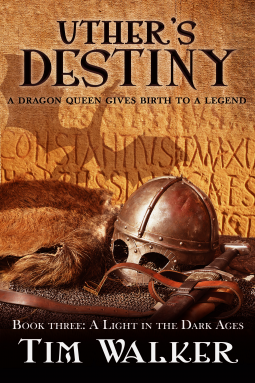
Late fifth century Britannia recoils in shock at the murder of charismatic High King, Ambrosius Aurelianus, and looks to his brother and successor, Uther, to continue his work in leading the resistance to barbarian invaders. Uther’s destiny as a warrior king seems set until his world is turned on its head when his burning desire to possess the beautiful Ygerne leads to conflict. Could the fate of his kingdom hang in the balance as a consequence?Court healer and schemer, Merlyn, sees an opportunity in Uther’s lustful obsession to fulfil the prophetic visions that guide him. He is encouraged on his mission by druids who align their desire for a return to ancient ways with his urge to protect the one destined to save the Britons from invaders and lead them to a time of peace and prosperity. Merlyn must use his wisdom and guile to thwart the machinations of an enemy intent on foiling his plans.Meanwhile, Saxon chiefs Octa and Ælla have their own plans for seizing the island of Britannia and forging a new colony of Germanic tribes. Can Uther rise above his family problems and raise an army to oppose them?Book three in A Light in the Dark Ages series, Uther’s Destiny is an historical fiction novel set in the Fifth Century - a time of myths and legends that builds to the greatest legend of all – King Arthur and his knights.This book is preceded in the series by Abandoned (book one) and Ambrosius: Last of the Romans (book two).
To grab your copy of Uther’s Destiny click
HERE!
What is NetGalley?
How It Works (in their own words…)NetGalley connects publishers and authors to an enthusiastic community of early influencers who will help their book succeed: librarians and booksellers who order and recommend books to their patrons, media professionals who interview authors, reviewers and bloggers who write about books online and leave reviews on retail sites, and more. Publishers and authors list their titles on NetGalley for members to request, read, and review, and members gain free access to a vast catalog of digital review copies.
NetGalley for Members
NetGalley is a service to help readers of influence discover and recommend new books to their audiences. If you are a reviewer, blogger, librarian, bookseller, educator, journalist or other member of the media, you can use NetGalley for free to request, read, and recommend books before they are published.Your reviews and feedback are essential to publishers and other readers!
Become a NetGalley member today!
NetGalley
Published on November 10, 2018 02:21
November 9, 2018
The Value of Onsite Research by Nancy Blanton #Research #amwriting #HistoricalFiction @nancy_blanton
The Value of Onsite ResearchBy Nancy Blanton
 Blarney Castle.
Blarney Castle.To me and probably many other authors, the double-edged sword of historical writing is pleasure and responsibility. On the pleasure side is travel. I must travel. I enjoy travel. I feel fortunate when I do. I learn so much. On the other side, responsibility requires that I travel for information, striving for accuracy in my writing, which is very hard work indeed, takes time, and can sometimes be costly.
When I tell new acquaintances I write historical fiction set in 17thcentury Ireland, often I get a wink and a smile: “So you get to travel,” they say, as if it’s all a big ruse, I can expense it on my taxes and basically travel for free.
If only. I do have to pay for it all out of pocket, and it is my work. There is really no substitute for firsthand experience with the locations, the sounds, voices and accents, the opportunity to walk in the footsteps of historical figures, and to see what they might have seen. I record it and share it.
Those of us who are fans of best-selling author Diana Gabaldon know the story, that she had never visited to Scotland before writing her famed Outlander series. She’s a gifted writer whose agent signed her on the basis of scenes alone, not even entire stories. Upon signing a three-book publishing contract she and her husband did indeed make the trip. She saw the big monolith and said yes, this is just as I imagined it.
 Diana Gabaldon (2010) author of Outlander — Wikipedia.
Diana Gabaldon (2010) author of Outlander — Wikipedia.Being there not only allowed her to confirm her vision and what her research had provided, but also likely enriched her work with sensations: the dampness of the air, the scent of the ground, the sounds of the trees, the calls of the birds, and perhaps even the taste of the Rhenish wine. It’s the five senses that make a location real to readers and bring scenes to life.
In addition, she gained the respect and adoration of the Scottish people. There’s an important human element involved in visiting a place one is going to write about in depth, of its geography, its history and its language and customs. Gabaldon spent weeks exploring Scotland. Now there are entire businesses developed around the Outlander theme and contributing to Scotland’s economy.
I have traveled to Ireland six times to see it, feel it, gather detail and hear what people have to say. I’ve had Irish readers tell me they’ve learned about their own history from reading my books. And I can hardly wait for the next time I go there, because I’ll never learn enough.
I last visited Ireland in April 2018, with an itinerary of places I wanted to see, so full I had to cross some of them off. My poor sister and traveling companion had never seen Ireland before, but eschewed the more common tourist sites to accompany me on this research trip. From Dublin airport, and with the invaluable help of my friends Eddie and Teresa of County Cork, we started at Malahide, then Drogheda, Dublin, Naas, Wicklow and Tinahely, then Waterford and Carrick-on-Suir. From there we headed west to Bandon and Skibbereen. We saw beautiful Kinsale and Blarney, then Adare, Clifton, Portumna, and Birr.
 Malahide
MalahideWhen I think of each location, something tactile comes to mind. Something unforgettable. At Drogheda, for example, it was the cold mist that obscured the distance, and what seemed to me a light humor overlaying a lingering sorrow. At Tinahely you could take in beautiful vistas, but not without standing in deep ruts of mud. At Skibbereen there is something bittersweet in its essence, and yet comforting in the way its buildings are rooted against the banks of the River Ilen. Each of these places experienced terrible histories, and survived.
But nothing compares to the emotion that rises, standing at the edge of the Cliffs of Moher in County Clare. Here, in the rain, the wind, the crashing sea and fearsome beauty of the shear drop to the rocks, the lungs and heart swell. It’s a place of power, renewal, and pride. The cliffs themselves are raw elegance, the jutting chins of defiance and determination. It is eternal.
 Cliffs of Moher in County Clare.
Cliffs of Moher in County Clare.I can learn much from the books and journals and other sources that fill my office and file folders. But they will never stir this kind of passion that drives my soul. Each time I think of it I still take in my breath.
Another benefit of my travels has been finding books I’ve found nowhere else, that provide the kinds of local and historical details a writer loves. In years past, I’ve found wonderful books in the gift shops at castles and museums. Unfortunately, that seems to be changing, perhaps because those books don’t sell as well as the t-shirts, hats and trinkets. During my visit to Dublin Castle, there was only one picture book offered with a brief history of the castle. And at Trinity College library gift shop, I was astonished and saddened to find its bookshelf completely empty.
Taking up the slack are some online library services like Google Books. Though that grand digitization project was stalled, I have found a number of volumes there and elsewhere that answer questions few people in the trinket shops will be asking.
And even better, I came home with books, documents and verbal information received from the historian, archaeologist, and other people I met during the trip.
Travels, like this last one, can be whirlwind experiences, trying to take in as much as possible within only a week to ten days at a time—what my schedule allows. In such cases I find, when I review my notes and pictures, and take time to focus my thoughts on a place, it does come back to me and I can see and feel the experience again. The result satisfies that double-edge sword, bringing both joy and confidence to writing.
The Prince of Glencurragh
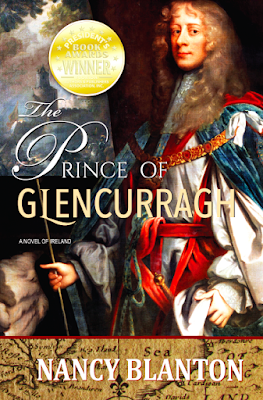 As the son of a great Irish warrior, Faolán Burke should have inherited vast lands and a beautiful castle, Glencurragh. But tensions grow in 1634 Ireland, as English plantation systems consume traditional clan properties, Irish families are made homeless, and Irish sons lose their inheritance. Encountering the beautiful heiress, Vivienne FitzGerald, Faolán believes if they were to marry, together they could restore his stolen heritage and build a prosperous life. But, because the Earl of Cork protects her, abduction seems to be his only option.
As the son of a great Irish warrior, Faolán Burke should have inherited vast lands and a beautiful castle, Glencurragh. But tensions grow in 1634 Ireland, as English plantation systems consume traditional clan properties, Irish families are made homeless, and Irish sons lose their inheritance. Encountering the beautiful heiress, Vivienne FitzGerald, Faolán believes if they were to marry, together they could restore his stolen heritage and build a prosperous life. But, because the Earl of Cork protects her, abduction seems to be his only option.Best friend Aengus O’Daly narrates as he and the brothers Thomas and Sean Barry help Faolán to complete the deed, and hasten to the Earl of Barrymore, who has promised to negotiate the marriage settlement. But Vivienne clearly has a mind of her own, and the adventure that began as a lark takes a dark turn when one man is injured, another is killed, and their plans for Barrymore’s support go awry.
Faolán now finds himself in the crossfire between the four most powerful men in Ireland—the earls of Clanricarde, Cork, Ormonde, and the aggressive new Lord Deputy of Ireland, Thomas Wentworth—men who use people like game pieces to be moved about for their own benefit. And other forces threaten their plans, and even their lives. With the course of events now beyond their control, will Faolán and Vivienne ever realize the dream of Glencurragh?
Amazon US Amazon UK
Sharavogue: A Novel of Ireland and Montserrat
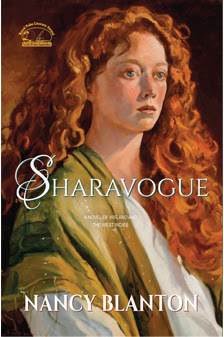 In December of 1649, England's Oliver Cromwell leads his brutal army across Ireland to crush a violent rebellion. Elvy Burke, daughter of a warrior, wants one thing--to live her destiny as a leader and defender of her country. As the cavalry approaches her village, Elvy knows she will not give up easily. Fleeing his soldiers, she aligns with a Scottish outlaw whose schemes send them headlong into a tumultuous journey across the sea to the West Indies. Elvy now wants only to survive, escape, find her sworn enemy Cromwell and kill him. Sharavogue is first place winner of the Royal Palm Literary Award for historical fiction.
In December of 1649, England's Oliver Cromwell leads his brutal army across Ireland to crush a violent rebellion. Elvy Burke, daughter of a warrior, wants one thing--to live her destiny as a leader and defender of her country. As the cavalry approaches her village, Elvy knows she will not give up easily. Fleeing his soldiers, she aligns with a Scottish outlaw whose schemes send them headlong into a tumultuous journey across the sea to the West Indies. Elvy now wants only to survive, escape, find her sworn enemy Cromwell and kill him. Sharavogue is first place winner of the Royal Palm Literary Award for historical fiction.Amazon US Amazon UK
Nancy Blanton
 Nancy Blanton is the author of award-winning novels based primarily in Irish history. The Prince of Glencurragh (July 2016), her second novel, is set in 1634 prior to the great rebellion of 1641.The book has won Florida's Royal Palm Literary Award for historical fiction and was named first runner up for Book of the Year. It has also medaled in the Feathered Quill Book Awards and is a top finalist in Amelia Island Book Festival's Book Island Literary Awards and M.M. Bennetts Prize for Historical Fiction.
Nancy Blanton is the author of award-winning novels based primarily in Irish history. The Prince of Glencurragh (July 2016), her second novel, is set in 1634 prior to the great rebellion of 1641.The book has won Florida's Royal Palm Literary Award for historical fiction and was named first runner up for Book of the Year. It has also medaled in the Feathered Quill Book Awards and is a top finalist in Amelia Island Book Festival's Book Island Literary Awards and M.M. Bennetts Prize for Historical Fiction.Her first novel, Sharavogue, also set in 17th century Ireland, is the 2014 winner of Florida’s Royal Palm Literary Award.
Her third book, The Earl in Black Armor, set in the time of Thomas Wentworth, is scheduled for publication in late 2018.

Coming soon...
Visit Nancy at nancyblanton.com
Published on November 09, 2018 23:00
November 8, 2018
#Giveaway — One Hell Of A Prize by Ju Ephraime #Historical #Romance @JuEphraime
We are celebrating, Ju Ephraime's, New Release today. Check it out!
One Hell Of A PrizeBy Ju Ephraime
 Proud and courageous, Cheyenne Edson has to fight for everything she gets. It's been that way from childhood, and she knew no other way. A half-breed by birth, with a ma who was there yet never really there, Cheyenne knew she had to make her own way in life or get destroyed by it, like it had destroyed her beautiful mother.
Proud and courageous, Cheyenne Edson has to fight for everything she gets. It's been that way from childhood, and she knew no other way. A half-breed by birth, with a ma who was there yet never really there, Cheyenne knew she had to make her own way in life or get destroyed by it, like it had destroyed her beautiful mother.When her ma marries her off to a man more than twice her age, Cheyenne is willing to accept the hand that fate has dealt her until her new husband up and leaves her before she's even gotten used to the idea of being a wife.
She expects her husband to be gone for a few months, but when months turn into years, Cheyenne is left with a question, is she a wife or a widow? With no family or friends, and starved for attention, she befriends the first thing that shows her any love, a half-breed wolf that she rescues. Together the two of them try to live in a land where only the strong survive, where women are viewed as nothing more than the property of men and wolves and dogs are only to be tolerated.
Cheyenne is used to making use of her double-barreled shotgun to keep unwanted visitors away from her cabin until she catches the eyes of Theodore McCloud (Tipp). Cheyenne knows when she looks into his eyes that this stranger will be trouble for her and her dog, and no matter how many times she refuses his gifts, he will not take no for an answer. In the quiet of the night, she has to be honest with herself. Does she really mean no? Does she want him gone, as she keeps telling him? In the hours just before dawn, the truth has a way of making itself heard, of forcing one to acknowledge what is and what isn't. And in Cheyenne's case, what she says isn't what she means. She doesn't want him gone, as she keeps telling him. She needs him, in every sense of the word. She won't survive without him, but first she has to acknowledge that fact and then get Tipp to see her as something more than a widow with a slow walk.
Tipp feels the earth shift under his feet when he sees the woman crossing the track that leads to the supply store. He has been cleaning his gun until he sees her, and now he has to get to know her. When her honor and her life are put into question, Tipp knows he will defend her with the last breath in his body, if that's what it takes, as he swears nothing or no one will stand between the woman who inspires such an intense passion in him that he will drop everything and follow her.
Giveaway
Ju Ephraime is giving away 3 ebook copies of One Hell of a Prize.To be within a chance to win all you need to do is answer this question:I love Historical Western Movies. If you had to choose to watch either Last of the Mohicans or Dances With Wolves, which movie would you pick and why?Leave your answer in the comments at the bottom of this post.I shall look forward to reading your answers.
The Last Of The Mohicans - Official® Trailer [HD]
Dances With Wolves - Official® Trailer [HD]
Giveaway Rules• Leave your answer in the comments at the bottom of this post.• Giveaway ends at 11:59pm BST on November 30th. You must be 18 or older to enter. • Giveaway is open INTERNATIONALLY. •Only one entry per household. • All giveaway entrants agree to be honest and not cheat the systems; any suspect of fraud is decided upon by blog/site owner and the sponsor, and entrants may be disqualified at our discretion.•Winners will be announced in the comments.• Winner has 48 hours to claim prize or new winner is chosen.
Buy your copy HERE!
Ju Ephraime
Ju Ephraime is a prolific, multi-genre writer. Beginning only in 2009, she has written almost 60 books, and shows no signs of slowing down or stopping. Ju loves to read as much as she loves to write. She sees the two as complementary to each other. In her words, there's no one without the other. She hails from a tiny island in the Caribbean but currently resides in the US.Ju loves to hear from readers, you can find her: Website • Facebook • Twitter.<!-- /* Font Definitions */ @font-face {font-family:Times; panose-1:2 0 5 0 0 0 0 0 0 0; mso-font-charset:0; mso-generic-font-family:auto; mso-font-pitch:variable; mso-font-signature:3 0 0 0 1 0;} @font-face {font-family:"Cambria Math"; panose-1:2 4 5 3 5 4 6 3 2 4; mso-font-charset:0; mso-generic-font-family:auto; mso-font-pitch:variable; mso-font-signature:-536870145 1107305727 0 0 415 0;} @font-face {font-family:Calibri; panose-1:2 15 5 2 2 2 4 3 2 4; mso-font-charset:0; mso-generic-font-family:auto; mso-font-pitch:variable; mso-font-signature:-520092929 1073786111 9 0 415 0;} /* Style Definitions */ p.MsoNormal, li.MsoNormal, div.MsoNormal {mso-style-unhide:no; mso-style-qformat:yes; mso-style-parent:""; margin-top:0cm; margin-right:0cm; margin-bottom:10.0pt; margin-left:0cm; line-height:115%; mso-pagination:widow-orphan; font-size:11.0pt; font-family:Calibri; mso-ascii-font-family:Calibri; mso-ascii-theme-font:minor-latin; mso-fareast-font-family:Calibri; mso-fareast-theme-font:minor-latin; mso-hansi-font-family:Calibri; mso-hansi-theme-font:minor-latin; mso-bidi-font-family:"Times New Roman"; mso-bidi-theme-font:minor-bidi;} .MsoChpDefault {mso-style-type:export-only; mso-default-props:yes; font-size:11.0pt; mso-ansi-font-size:11.0pt; mso-bidi-font-size:11.0pt; font-family:Calibri; mso-ascii-font-family:Calibri; mso-ascii-theme-font:minor-latin; mso-fareast-font-family:Calibri; mso-fareast-theme-font:minor-latin; mso-hansi-font-family:Calibri; mso-hansi-theme-font:minor-latin; mso-bidi-font-family:"Times New Roman"; mso-bidi-theme-font:minor-bidi;} .MsoPapDefault {mso-style-type:export-only; margin-bottom:10.0pt; line-height:115%;} @page WordSection1 {size:612.0pt 792.0pt; margin:72.0pt 90.0pt 72.0pt 90.0pt; mso-header-margin:36.0pt; mso-footer-margin:36.0pt; mso-paper-source:0;} div.WordSection1 {page:WordSection1;} </style><br /><br />
Published on November 08, 2018 23:00
November 7, 2018
From Romance to Dragons… by Grace Augustine #amwriting #fantasy #mythology @mallidalli
From Romance to Dragons…By Grace Augustine

When I was approached last year to contribute a story to a 14 story dragon fantasy anthology, STOKING THE FLAMES II, my first thoughts were, “How wonderful they want me to participate!” “I can’t wait to do this.” Then, reality struck. Why did I agree to write something I knew nothing of? I write romance…romance for the over 50 crowd, contemporary romance, metaphysical romance, Christian romance suspense, sweet romance, steamy romance…surely there was some story I could concoct that centered around a dragon—with romance, of course.Soon, I was researching Norse mythology for names and gods/goddesses, trying to fit them into my imagination. That was when SECRETS OF DALGAARD CASTLE was born. I certainly found interesting information while researching Norway, her customs, her folklore, and her mythology.Without revealing too much, I will try to give you a taste of the story...
***
Norway is a vast land and the tiny kingdom of Taydaryn is only a miniscule portion. Taydaryn had been ruled by countless queens…all white, fair, good dragons, too. Brenna Dalgaard was a successful clothing designer with her own thriving global business centered in Chicago, IL in the United States. The eldest daughter of Queen Isara and King Amarice Dalgaard, she was heir apparent to the throne.When King Amarice died in a bloody battle to save Taydaryn, Queen Isara ruled the country by herself. Many secrets happened during this time that will are revealed throughout the book.Brenna received notice that her mother was in ill and beckoned to come to Norway. She did. She also tried to talk her younger sister, Eldra, to accompany her. Eldra, of course, would have no part of it.Following the Queen’s death, the question of who would take the crown was foremost in the minds of all. A series of events cause injury and mayhem throughout Dalgaard Castle and the kingdom of Taydaryn.
***
I’m afraid to say more for fear of revealing the entire story to you. I was presented an opportunity to participate in A HAUNTINGLY WINTER ANTHOLOGY and the only thing I could think to write was a companion piece to SECRETS OF DALGAARD CASTLE, five years in the future, during Winter Solstice. The story was accepted and will appear in this anthology which will release in November. It is the story of Odin and Skadi as told by Queen Brenna Dalgaard during a winter solstice fundraiser.

I recently participated in the Iowa Library Association State convention as an author presenter. It was a fabulous way of networking with libraries as well as with other authors. While at this event, I received an email congratulating me that the cover of this dragon fantasy love story was up for cover of the week at Crème de la Cover at InD’tale magazing. This story certainly has woven its way through my heart and the hearts of others. It was the most purchased book at this convention.Will I write another dragon fantasy/mythology? I have no clue. Currently I’m trying to complete a holiday sweet romance, keep up with my day job (editor) and finish up some acrylic paintings for Christmas gifts. I do think Eldra and Martrand’s story should be told, so I’m sure when those characters start talking to me, I will be telling the world about these two characters.Grace Augustine
Secrets of Dalgaard Castle
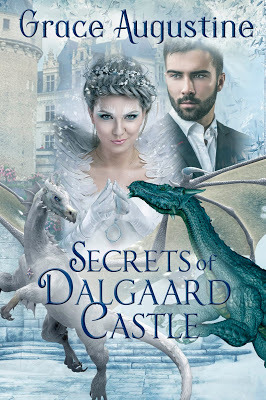 Dalgaard Castle stood proud among modern homes as a reminder of the battles of yesterday. Centuries ago, the bloodiest of wars between the Fire Dragon Guard and the Ice Dragons, who ruled Taydaryn, destroyed much land, homes, and lives—including the Queen’s husband, Amarice. Brenna Dalgaard, the elder daughter of Queen Isara and King Consort Amarice, lived in two worlds. She loved her small Norwegian home, but also loved her thriving designer clothing business in Chicago. Brenna traveled home as much as her life would allow. Tirdon, Assistant to the Prime Minister of Taydaryn, continues to support and uphold the laws of the kingdom and aide in any way possible. Amarice had faith in him to place him in this position with the command of keeping an eye on his elder daughter, Brenna. Tirdon and Brenna have danced around each other their entire lives. A misfortunate accident brings the two closer than either thought possible. Will an ancient secret split them forever or bring their love for each other out of the shadows?
Dalgaard Castle stood proud among modern homes as a reminder of the battles of yesterday. Centuries ago, the bloodiest of wars between the Fire Dragon Guard and the Ice Dragons, who ruled Taydaryn, destroyed much land, homes, and lives—including the Queen’s husband, Amarice. Brenna Dalgaard, the elder daughter of Queen Isara and King Consort Amarice, lived in two worlds. She loved her small Norwegian home, but also loved her thriving designer clothing business in Chicago. Brenna traveled home as much as her life would allow. Tirdon, Assistant to the Prime Minister of Taydaryn, continues to support and uphold the laws of the kingdom and aide in any way possible. Amarice had faith in him to place him in this position with the command of keeping an eye on his elder daughter, Brenna. Tirdon and Brenna have danced around each other their entire lives. A misfortunate accident brings the two closer than either thought possible. Will an ancient secret split them forever or bring their love for each other out of the shadows?Amazon US • Amazon UK
Grace Augustine
 Internationally known author, Grace Augustine, was born in Shelby, Montana and grew up in Cut Bank, Montana (dubbed as The Coldest Spot in the Nation). Her work career has taken her from title and abstracting to administrative assistant church work to co-owning a small town weekly newspaper to her current profession as a floral designer.
Internationally known author, Grace Augustine, was born in Shelby, Montana and grew up in Cut Bank, Montana (dubbed as The Coldest Spot in the Nation). Her work career has taken her from title and abstracting to administrative assistant church work to co-owning a small town weekly newspaper to her current profession as a floral designer.Grace thinks of herself as a "Jill" of most trades and is not afraid to learn new things. "If you can't learn something new each day, there's something wrong," she says.
The ideas for her Acorn Hills series stem from her growing up years as well as the issues she has had to overcome along the way. "I've developed a new romance category...for the over 50 crowd...I'm calling it the salt and pepper genre. My books deal with real life issues, overcoming adversity, maintaining a positive outlook, and so much more. Just because we are 50 yrs old or older doesn't mean that life stops. We all still want attention and affection and adventure! We want to experience all life has to offer. We use our age as wisdom to share with those around us. We are sexual, sensual, and sensible," Grace explains.
Augustine was diagnosed with Multiple Sclerosis in July of 2003. Her thoughts on that "It may slow me down, but if I can at all do it, I will. Sitting and feeling sorry for yourself isn't the answer...living your life with an open, joy-filled heart is."
Grace loves to hear from readers, you can find her: Website • Facebook • Edits With A Touch Of Grace • Twitter.
Published on November 07, 2018 23:00
November 6, 2018
Life in the time of T. D’Arcy McGee… by Ann Shortell #History #Canada #Ireland @CelticKnotMcGee
Life in the time of T. D’Arcy McGee…By Ann Shortell
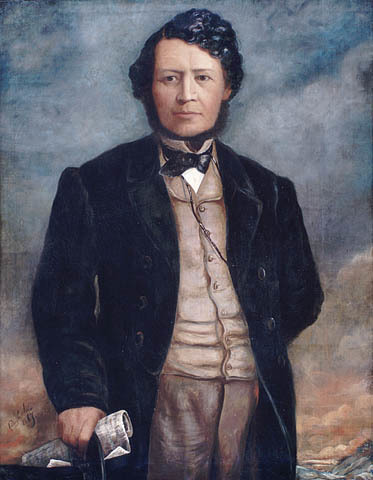
The Honourable Thomas D'Arcy McGee, 1867. Artist: Denis Hurley, (1875 - 1879)
T. D’Arcy McGee is well-known in Canada as one of the Fathers of Canadian Confederation—and as the first person assassinated in this country.
He’s also known and honoured in his birthplace: Carlingford, County Louth, Ireland.
Recently, some close friends visited Carlingford, and lunched at the eponymous bistro D’Arcy’s. Their friendly server, Paul, mentioned that he’s fascinated by McGee, so my friends sent this lad a copy of my novel, Celtic Knot .
I particularly appreciate the book making its way to the town that is also the birthplace of my fictional protagonist, Clara Swift. However, Celtic Knot is a twist of history. My fictional D’Arcy McGee is inspired by the historical figure, but is not a representation of this iconoclast’s life journey.
So it is with this young Carlingford gentleman in mind that I pen a few introductory words here about McGee, that quicksilver son of Ireland and father of Canada.
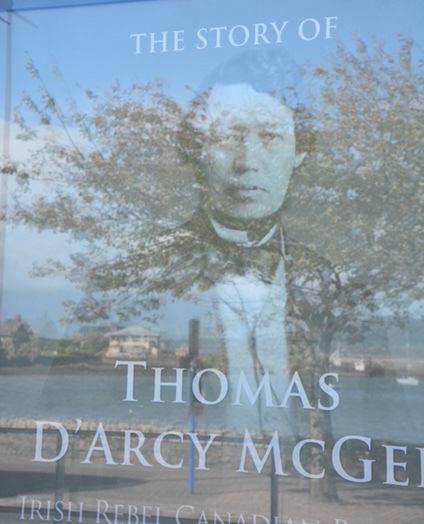
A photo of McGee’s image in a poster outside the museum in Carlingford, Ireland, captures both the man and the land he loved (photo: Cathy Scott, 2018, used by permission.)
p.p1 {margin: 0.0px 0.0px 0.0px 0.0px; font: 12.0px Helvetica; -webkit-text-stroke: #000000} span.s1 {font-kerning: none}

The eponymous Carlingford bistro D’Arcy’s (photos: Cathy Scott, 2018, used by permission)
McGee was a constant contradiction of a man: ambitious and self-destructive; compellingly ugly and at times unctuous, while undeniably a charismatic, canny politician and visionary statesman.
He was brilliant, a protean writer of prose and verse, and a celebrated orator. A successful man ever in quest of the right way to live, both for himself and for his people. His swings in mood, thought and political stance proved time and again to be the making of McGee’s fortune, then his undoing. The man charmed crowds and was embraced by their leaders, then lost the support of both—in three countries.
McGee’s intellectual hopscotch wasn’t limited to the political. During the course of his lifetime, he took conflicting positions on temperance and on religion. He began and ended as a prohibitionist and a committed Roman Catholic, but in between came a lifetime struggle with alcoholism and, during his early Irish and American days, a period of strong anti-clericalism.Born in 1825, McGee left Ireland in 1842—not because of economic or political hardship, but due to an adolescent rift with his stepmother. At age seventeen, he stood at a gathering in Boston and spoke with such eloquence about Irish independence that a newspaper offered him a job as their roving representative. After two years, the young McGee returned to Ireland. Though he worked for a time in London, McGee did witness his homeland suffer through the famine.
It’s too harsh to say that McGee viewed one million deaths as a costly harbinger to national revolt. But, in his writings, he did react to the famine mainly in the context of Ireland’s political foment.
Leading up to the 1848 rebellion, McGee morphed from reporter to a central organizer for the Young Ireland movement. When the rebellion failed, he escaped in picaresque fashion and returned to America rather than be captured alongside his peers.
From then on, McGee focused on promoting the status of Irish immigrants. By the 1850s, he turned against America as discriminatory and insular. McGee envisioned a large-scale emigration from America to the province of Canada East, where the British had already granted French Catholics the rights McGee sought for the Irish. His people did not follow; only his own family arrived in Montreal with McGee. There, once again, he quickly became a leading writer, thinker and political force in a landscape undergoing great change.
A decade later, he was the individual who conceived the concept of uniting British North American into a country called Canada. He saw this new nation as a template that could encourage the British to move toward an independent Ireland. McGee’s one brush with armed resistance had convinced him that further rebellion would be the worst possible outcome for Ireland.
This conversion to the concept of an Ireland that would slowly work to regain its rights under British rule placed McGee squarely at odds with old allies. He was not shy about owning his switch in allegiances. In the 1860s, McGee became the most public opponent of Irish Fenian rebels in North America. This endangered his political career, then his life.
McGee was shot in the back of the head on the steps of his boarding house, after a speech defending the founding of Canada. His assassination burnished his popularity. Mere months earlier, he’d been kicked out of the Montreal St. Patrick’s Society, then had trouble getting elected to the Parliament he’d helped create. By the time of his murder, McGee was about to be forced by debt—and having spent his political capital—to accept the sinecure of a civil service appointment. On his forty-third birthday, eighty thousand people took to the streets of Montreal to watch McGee’s funeral procession.
McGee had planned to focus on his writing to reinvigorate himself. As well as his newspaper work and speeches, he’d already authored a dozen books. And he was recognized in his day as a poet of note. Today McGee is almost unknown for his literary works. There is some suggestion that his poetry has been eclipsed in Ireland by his politics.
McGee called himself an old keener. His poem Home-Sick Stanzas describes his decision to leave Ireland as a wound that could not heal. The opening stanza can now be read as an epitaph for this visionary emigrant:
“Twice had I sailed the Atlantic o’er, / Twice dwelt an exile in the west;/ Twice did kind nature’s skill restore/ The quiet of my troubled breast—/As moss upon a rifted tree,/So time its gentle cloaking did,/ But though the wound no eye could see,/Deep in my heart the barb was hid.”

STATUE OF T. D’ARCY MCGEE, PARLIAMENT HILL, OTTAWA ONTARIO CANADA
p.p1 {margin: 0.0px 0.0px 0.0px 0.0px; font: 12.0px Helvetica; -webkit-text-stroke: #000000} span.s1 {font-kerning: none}
Photo by: D. Gordon E. Robertson
Celtic Knot

1868 Ottawa: Irish-Canadian politician D’Arcy McGee is assassinated. Patrick James Whelan is found guilty of murder in a show trial, and publicly hanged. That much is history. Did Whelan do the deed? Clara Swift thinks not. She saw a buggy on Sparks St., moments after the murder. . .
CELTIC KNOT: It’s reimagining a crisis that tested a new nation.It’s history with a mystery.It’s a Clara Swift Tale.And it all begins with a shot in the dark.
“. . .captures the tones and styles of the late 1800s perfectly . . .”
Foreword/Clarion Reviews(FIVE STARS)
“. . . conjures a memorable heroine . . . thrilling . . .”
Kirkus Reviews
“. . . a well-told, gripping tale of murder and its aftermath . . .”
Ottawa Review of Books
Amazon US • Amazon UK •
BookTopia• Watersones
Ann Shortell
 Ann Shortell is an award-winning Canadian author. She spent her youth writing serious articles and books about men with power and money, and how they responded to a time of great change in business and politics. Now she’s writing a historical mystery series about a young, poor, powerless Irish-Canadian immigrant girl, forced to cope during times of great trauma and political upheaval. Shortell likes to think she’s evolved.
Ann Shortell is an award-winning Canadian author. She spent her youth writing serious articles and books about men with power and money, and how they responded to a time of great change in business and politics. Now she’s writing a historical mystery series about a young, poor, powerless Irish-Canadian immigrant girl, forced to cope during times of great trauma and political upheaval. Shortell likes to think she’s evolved. She’s a member of the Historical Novel Society, Sisters In Crime, The Writers’ Union of Canada, and a member and director of Crime Writers of Canada (CWC).
Celtic Knot was a finalist for CWC’s 2017 unpublished manuscript award, the Unhanged Arthur.
p.p1 {margin: 0.0px 0.0px 0.0px 0.0px; font: 16.0px 'Helvetica Neue'; color: #323333; -webkit-text-stroke: #323333} span.s1 {font-kerning: none} span.s2 {text-decoration: underline ; font-kerning: none; color: #295376; -webkit-text-stroke: 0px #295376} p.p1 {margin: 0.0px 0.0px 0.0px 0.0px; font: 12.0px Helvetica; -webkit-text-stroke: #000000} span.s1 {font-kerning: none}
Published on November 06, 2018 23:00
November 5, 2018
The Viking war mentality – and why it made them such feared fighters by Sarah Dahl #History #Vikings @sarahdahl13
The Viking war mentality – and why it made them such feared fighters.By Sarah Dahl

The wisdom of OdinCattle die, Kindred die,We ourselves die just the same;But the good reputeNever diesOf one who has earned it. (Håvamål, Verse 76)
The king of the Nordic gods is Odin. It is him who started the first war in the world, in the realms of the gods. He was a warrior himself, a strategist and maker of battle plans. So the cult of Odin was central for Viking warriors, whether they went raiding or on war campaigns, like my couple Aldaith and Nyssa do in “Battles – Sacrifices for Love”. They are marching to the battlefield under a chieftain who will reward them for good service. Every comrade who marches with them hopes for a good fight that earns him or her an eternal reputation of honour and bravery. They also believed that Odin was invisibly present on the battlefield, to decide who should die and who should win the fight.
So my couple must surely felt a little watched when lining up for the shield wall…
They also believed that the outcome of every battle was predetermined – their fate was already decided. Therefore their warrior mentality made them unafraid to die: They couldn’t change their fate, or with their fighting alter the date they would die and face Odin – It was all already woven into the thread that was their life by the Norns, female deities or spirits. When a warrior died, the Norns had cut their life’s thread on the predetermined day. Simple as that. Nothing they could do would change their fate. So when my warriors Aldaith and Nyssa line up in the shield wall, they usually aren’t that concerned. They know they are good, and they have each other.
In their minds it wasn’t important IF a warrior died, but HOW: honour was everything and their reputation the highest good. It was vital that they fought well and honourably, without cowardice, and showed the gods they were worthy. Such dead warriors went to dwell in Valhalla with Odin. It was the ethereal Valkyries who chose the fallen warriors that would meet the mightiest of the gods to serve him as fighters. It was this afterlife that most warriors strived for. But it wasn’t an easy afterlife – Odin chose the warriors for his own interest, to create the best possible army for his last battle at Ragnarok, the end of the world, when all realms would be destroyed. So his warriors had to train well in Valhalla for this, every single day. They would fall, and then rise again to fight anew. Odin’s chosen warriors would have to again and again defy fear and fight without thinking of their own mortality – just like they had done down on earth, Midgard.
This unconcerned attitude caused the Viking armies to have a reputation of total fearlessness, which gave them a considerable advantage over other armies. It made Viking armies be feared and admired: their fatalistic mentality allowed them to trust the gods and their predetermined fate. They could throw everything they had into the fight, as long as they acted honourably and as valuable part of the army. To fall in battle wasn’t the end but could be seen as a goal, a reward, the chance to gain an eternal reputation as a fighter worthy of Odin.
Or so my warriors believed until this fatal day in my new story “Battles” – when, for the first time ever, Aldaith and Nyssa step out of line and the usual beliefs, and challenge their fates in more ways than one.
So what started in “Bonds – Under the Armour” as a sudden surge of worry before a campaign continues in “Battles”: Aldaith suddenly discovers he cares too much, he fears not for his own but his lover’s life. He can’t stand the thought of losing Nyssa, no matter if she then ended up with the mighty god or not. He feels selfish, irrational, is deeply confused. Driven by foreboding and fear, he gets distracted, endangers himself, leaves the lines. He finds himself out of his usual “warrior mentality” that Odin would like to see – and has to deal with the consequences. Unlike his usual self, he turns into a madman just to get to Nyssa, his fear for her gives him superhuman power and lets him mow down men left and right as if he was a berserker.
But can this possession that is set off by his love and despair save her life? The campaign ends, the battlefield empties – but the lovers’ battles aren’t at all over. After the battle, the real battles start, and they have little to do with swords and shields …
References:Vikings at War, by Kim Hjardar & Vegard Vike, Casemate Publishers UK.
Battles – Sacrifices for Love(The Seventh Tale of Freya)

The Tales of Freya are a collection of sensual short stories set in the Viking Age/
In a world of crackling fires and rough landscapes, long winters and bloody raids, the immediacy of life and death ignites undeniable passions. Warriors and monks, healers and housewives -- all follow the call of their hearts and bodies to indulge in pleasures that may forever change their lives.
Shoulder to shoulder, in life, love, and the battlefield – that is what Viking warrior Aldaith and his shield maiden Nyssa promised each other. On their way to the battleground he dreams of their very own sensual rewards after the upcoming campaign. But what begins as just another shield wall turns out to be the ultimate test of their bond. This battle might be their last …
Set in the Viking era, this is a stand-alone, adult read.
Excerpt
Aldaith was talking to himself and Odin's ravens, who had descended in swarms to examine the feast laid out for them. Black silhouettes hobbling past, Odin's helpers cleaning the churned up ground with their beaks — the god's gentle hand removing blood and intestines. Nothing else moved; the battlefield was as near dead as the men they had carried away. The Valkyries had just left. Chosen the warriors to be taken to Valhalla's doors. He wished he had seen the ethereal women, watched them swipe up the fallen and carry them gently to their mighty god, so they could feast and fight and be merry once again, forever rewarded.
He wiped away the water that escaped his eyes. "Please, gods … please let her survive this. I need her."
He looked up at the dark skies. The moon was just out. The last rays of light had retreated. Aldaith was grateful for nightfall. But it also filled him with fear. This darkness would stay now. It would never again leave his heart, and paralyse him until he met his fate with the Norns.
He cursed at the wet ground as he continued to rake through it. It had to be here where she fell! He needed the pendant back to give it to her for the journey. She should be wearing it proudly when she looked into Odin's eye.
Amazon UK • Amazon US
Sarah Dahl
 Sarah Dahl lives on the edge of the rural German Eifel and writes historical fiction primarily set in the Viking age. She also works as an editor, translates, and coaches new writers in German and English. She is interested in everyday life in bygone centuries and the human stories that may have occurred behind the hard, historical facts. Her author page is: sarah-dahl.com
Sarah Dahl lives on the edge of the rural German Eifel and writes historical fiction primarily set in the Viking age. She also works as an editor, translates, and coaches new writers in German and English. She is interested in everyday life in bygone centuries and the human stories that may have occurred behind the hard, historical facts. Her author page is: sarah-dahl.comSarah loves to hear from readers, you can find her: Website & Blog • Mailing list• Facebook • Twitter • Goodreads.
Published on November 05, 2018 23:00
The Coffee Pot Book Club
The Coffee Pot Book Club (formally Myths, Legends, Books, and Coffee Pots) was founded in 2015. Our goal was to create a platform that would help Historical Fiction, Historical Romance and Historical
The Coffee Pot Book Club (formally Myths, Legends, Books, and Coffee Pots) was founded in 2015. Our goal was to create a platform that would help Historical Fiction, Historical Romance and Historical Fantasy authors promote their books and find that sometimes elusive audience. The Coffee Pot Book Club soon became the place for readers to meet new authors (both traditionally published and independently) and discover their fabulous books.
...more
...more
- Mary Anne Yarde's profile
- 159 followers



